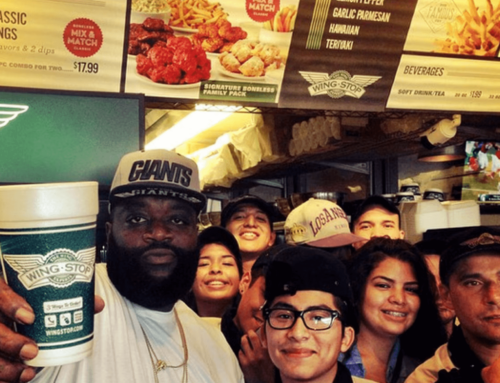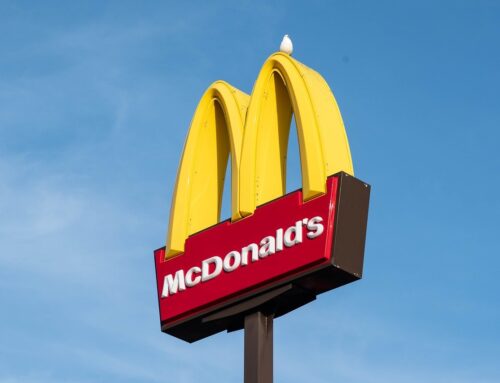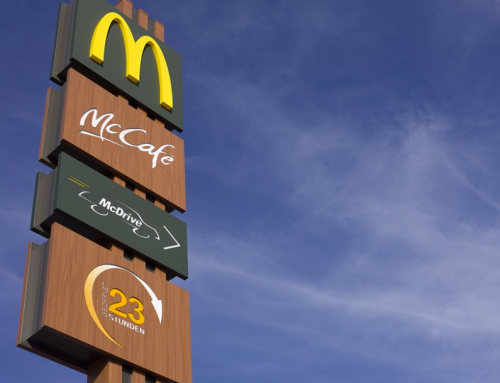Aspiring franchisee’s want to know… Will this finally be the year that In-N-Out Burger decides to franchise? To the best of my knowledge it doesn’t look like this will be an option over the next 12 months. The burger chain is privately owned / operated and with the current CEO stating there were no plans to franchise the profitable restaurant concept. Bummer!
If you’d like to find a burger chain that is currently franchising take our 8-minute franchise quiz. Otherwise, check out my full analysis of the In-N-Out Burger business model so you’ll be ready to pounce on this opportunity if it ever becomes available.
How Much Profit Does In-N-Out Burger Make Per Year?
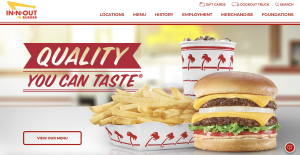
Will In-N-Out Burger Ever Franchise?
With over 200 stores in California, Arizona, and Nevada, In-N-Out Burgers Inc. is a renowned fast-food retailer. Since its foundation in 1948, the company has stuck to the same core menu and customer-friendly concept. This burger joint is recognized for its made-to-order hamburgers, organic ingredients, and excellent service.
Burgers, cheeseburgers, the Double-Double, French fries, malts, shakes, and sodas are menu favorites. There’s even a not-so “secret menu” that allows you to order anything animal style. This means there’s a Thousand island style sauce, grilled onions, and cheese added to the item. Microwaves, heat lamps, or freezers have never been used in the establishments, ensuring each guest’s food is fresh and made-to-order.
Fast Facts
| Industry | Quick Service Restaurant |
| Founded | 1948 |
| Country/Territory | United States |
| Headquarters | Irvine, California |
| President & CEO | Lynsi Snyder |
| Number of employees | 31,500 |
| Total Units | 370 |
| Revenue | Over $500 million |
In-N-Out Burger is a family-owned and operated business. As a result, their financial accounts are not made available to the general public. However, we don’t have any specific revenue information for the company. Given that McDonald’s is substantially larger than In-N-Out, it’s difficult to think that they don’t make more profit.
In 2017, In-N-Out Burger generated approximately $575 million, while McDonald’s grossed $21.025 billion. That’s due to the fact that, while McDonald’s has outlets all over the globe, In-N-Out is a national chain with locations largely in the Southwest and along the Pacific coast.
SWOT Analysis
California, Nevada, Arizona, Oregon, Utah, Colorado, and Texas are among the seven states where In-N-Out Burger operates. In 2022, the company has plans to open new units in Idaho.
Considering the devoted following, the business is in strong financial standing. The main question in this scenario is expansion: How quickly should the organization expand? Should expansion happen internationally? A secondary consideration is brand stewardship, or who is best positioned to manage the brand as it grows through the following decade. Obviously these are all high-quality problems for a business to have.
Strengths, Weaknesses, Opportunities, and Threats are the four main components of a SWOT analysis. Here’s what they look like for In-N-Out Burger.
Strengths
- Strong ties with current suppliers. In-N-Out Burger has a strong relationship with suppliers. In normal economic times this may not seem like a strength. But given the supply chain challenges presented to the restaurant industry over the past 2 years, this advantage has become more evident. In-N-Out Burger partners with Harris Ranch Beef based out in Selma, California, to provide 100% USDA ground chuck. Since this farm is based in California, it make distribution of fresh meat simpler from a logistics perspective.
- Strong balance sheet. The potent financial position and performance of In-N-Out Burger can assist the company in investing in new and various ventures that will diversify the stream of revenue and enhance Return on Sales (RoS) and other metrics. Another benefit is that the company doesn’t need to appeal to share holders who may have ideas on how revenues should be spent, invested, or paid-out in the form of a dividend. Current management / ownership has full say over company spend, research and development.
- Customer Loyalty and Nostalgia. Because In-N-Out customers are incredibly loyal. That’s no surprise if you’ve dined here before. In-N-Out provides exceptional value, a menu that appeals to a broad swatch the population, and an industry leading top-notch staff no matter where you visit. In-N-Out is routinely ranked in the top 100 chains in the United States according to quarterly surveys conducted by YouGov America. This restaurant is well-recognized and beloved by all age groups surveyed from Boomers to Millennials.
- Recognized as a top U.S. brand. Even though In-N-Out Burger is not a global player, it still occupies its rightful place as one of the top brands in the quick service restaurants industry in the country. Their high quality and well-known products such as their Double-Double® rival that of McDonald’s Big Mac and other well-known burger products from their competitors. In fact, In-N-Out Burger ranked 2nd in Forbes Halo’s top 100 U.S. brands for 2022, which is described as the companies creating brands that consumers love.
- Family-owned, privately listed company. The primary reason why the fast-food chain doesn’t offer franchising and going public is also one of its core strengths. In-N-Out Burger wants to preserve the quality of its products as one of the main reasons they decided not to go public. Being a privately-owned company, the quick-service restaurant ensures the high standard of products as well as their service.
Weaknesses
- The company’s environmental track record isn’t exactly stellar. The environmental track record of In-N-Out Burger when it comes to environmental issues is not great. Of course, all fast-food chains struggle with waste from cups, straws, and other paper / plastic packaging. Environmentalists may criticize the organization for its inadequate waste management policies and inability to incorporate sustainability into its operations. Customers, especially Millennials as well as Gen Z, are now consider environmental safeguards an important aspect when conducting business. This is a weakness and risk considering the company is based out of California where social and environmental issues are important to residents.
- Culture of the company. When an organization’s culture is out of sync with its strategic/business goals, it becomes a major internal flaw. The main strategic goal of the chosen corporate organization, for example, is to introduce innovative and new products to the market. However, there is a risk-averse culture in existence in the workplace, which discourages individuals from thinking outside of the box.
- Limited media marketing. Inadequate marketing and promotion budgets limit a company’s capacity to grow its consumer base and encourage repeat purchases. In-N-Out Burger is known for producing exclusively radio ads. Since 1987, the fast-food joint has only had one television commercial.
- Slow service. The workforce is less productive as a result of high workplace stress and low worker morale. Terrible customer service management (such as ineffective complaint management handling) can also lead to unfavorable word-of-mouth further about the company and stifle growth.
- Inadequate food variety. Since its inception, In-N-Out Burger has stayed true to its mantra, which is to serve high-quality burgers, fries, and shakes. Sadly, this is all that they have. In comparison with industry leaders such as McDonald’s and Burger King, these corporations have caught up with the times and have long diversified their menus. McDonald’s for instance has long ventured into the coffee-making enterprise.
Opportunities
- Increased consumer spending power. The accelerating growth of the population, specifically in existing or new client segments, represents a significant opportunity for corporate growth. In-N-Out Burger may take advantage of rising disposable income to create a new business model in which customers pay for things as they use them. In-N-Out Burger may also capitalize on this trend by diversifying its consumer base and expanding its growth plan.
- Similar market possibilities. Consumers, Intensive growth strategies to further market expansion, particularly by enhancing the characteristics of current products and services. In-N-Out Burger can explore adjacent sectors and customers, a growth approach to further sales growth. The creation of new market segments and niches provides prospects for business and product line expansion.
- Changing consumer preferences. The market has risen rapidly during the previous decade and a half. As a result of the influx of new clients, consumer preferences and tastes have evolved. This confronts In-N-Out Burger with two major challenges: how to retain existing customers and how to attract new ones. In-N-Out Burger has attempted to diversify by using several brands and then adding various features based on client preferences. If a company has good market data, shifting client wants, tastes, and preferences can be viewed as an opportunity.
Franchise Review: Is the Crumbl Cookies Franchise Too Expensive?
- Outlet expansion. Currently, In-N-Out Burger has approximately 370 branches in about 7 states. In comparison with McDonald’s over 14,000 outlets worldwide, this number is way too modest. Although McDonald’s is an established global brand, In-N-Out Burger can somehow expand and diversify its channels. This is not to directly compete with them, but they can try to operate new outlets outside of the mainland U.S. to test the waters and see if their concept can be somewhat as successful as other known U.S. brands that have gone global.
- Technological advancements. The introduction of innovative technologies to facilitate the production and distribution of products and services can be used to integrate technology in corporate processes. Emerging automation integration can lower costs, increase productivity, and speed up the creation of new products. Artificial intelligence advancements could help In-n-Out Burger better estimate consumers’ needs, adapt to niche markets, and improve advanced analytics.
Threats
- Rise of protectionism. In-N-Out Burger should take steps to mitigate the danger of rising protectionism, such as storing data in the worldwide market and distributing risk by working in countries with varying economic cycles. Since Trump’s presidency, geopolitical factors have shifted toward more protectionism. Brexit, Russian sanctions, Venezuela’s foreign currency exchange problems, inflation, decreased oil prices, and other events are affecting the global business landscape. In-N-Out Burger should pay special attention to these occurrences and incorporate them into its strategy.
- Growing competition. Other than established rival brands in the industry like McDonald’s, new players have already entered the market and have been doing great as well. Five Guys for instance, also a family-owned business that started out only in 1986, has higher sales and number of units than In-N-Out Burger as of 2019. Fresh meat, a variety of free toppings, and, of course, matching these flavorful burgers with fresh-cut fries are all popular among customers.
- Lose exclusivity. There is also a downside in trying to expand their menu as well as their other business interests. Primarily, they would lose their brand exclusivity in the market, which is the main reason they have kept their loyal customer base. Take KFC for instance, the local franchise for the longest time has offered gravy as a sauce for their well-loved chicken. In Singapore, KFC doesn’t offer this delicious sauce since the culture doesn’t prefer it to be. Going global can mean changing ingredients and product preparation due to differences in preference and the culture itself.
- Volatility in food supply prices. Other than the rise in protectionism which was brought about by the Trump administration, the current covid pandemic which started in 2020 has greatly impacted domestic as well as global supply chains. Rising covid cases brought about by emerging variants of the virus and border restrictions among nations have brought world economies onto their feet. Either the fast-food joint waits it out for things to normalize or draws strategies that would maneuver them through the current health crisis.
- Increasing health consciousness. During the past decade or so, people have started to be conscious about their health, specifically in the food they eat as well as their lifestyle. Other rival brands have shifted into offering plant-based patties that would best suit their health-conscious customers. They also offer drinks that have less or no sugar at all. If In-N-Out Burger continues with its current menu, the company may not be able to keep pace with the changing times.
Can you invest in In-and-Out Burger?
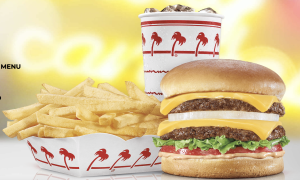
They call this the Double Double.
At this point, we already know that In-N-Out Burger does not offer to franchise as it has been operated as a privately-owned company by the Snyder family since its inception way back in 1948. Furthermore, since In-N-Out Burger is owned by members of the family, either directly or through a trust, shares in the company will not be available for purchase on the public market.
In-N-Out Burger is also the core business, meaning it doesn’t even have a parent company you may be able to put your money into. Any shares of the company’s common stock are not available for purchase or trade unless and until it has an Initial Public Offering (IPO), save among the owner and the initial investors (if any).
As Lynsi Snyder stated that they don’t have any plans of going public, she also said in an interview, “It’s not about the money for us, unless God sends a lightning bolt down and changes my heart miraculously, I would not ever sell.”
How Much Would The Company Be Worth If They Went Public?
Based on Forbes Magazine’s October 2018 Richest 400 issue, Lynsi Snyder, the current owner of In and Out, is valued at $3 billion; however, it is speculated that if an IPO were to be made, it would be much more than her value at that time.
Some online pundits believe that if In-N-Out opens franchising, the franchise cost will be roughly $35,000, though this has yet to be confirmed. The costs of starting a business vary depending on the area. With financial liquidity of $200,000 and net worth of $400,000, the first investment ranges from $310,000 to $615,000.
In-N-Out Burger is an American fast-food chain company with outlets predominantly in California and the Southwest. It was established by Harry and Esther Snyder in Baldwin Park, California, back in 1948. The company headquarters is located in Irvine, California, and it has spread throughout the state, and into neighboring states of Nevada, Arizona, Utah, Oregon, Colorado, and Texas. In addition to its primary Baldwin Park facility, the chain has established other distribution locations along with its expansion. The new facilities in Lathrop, California, Colorado Springs, Colorado, Draper, Utah, Phoenix, Arizona, and Dallas, Texas will allow for future development across the country.

SoCal Vibes.
Harry persuaded Esther to marry him in 1948, and they built their first restaurant across the street from Harry’s childhood home in Baldwin Park, a Los Angeles suburb. It was going to be the first In-N-Out Burger, and it was unlike any other fast-food restaurant at the time.
Other restaurants, such as McDonald’s and Carl’s Jr., were keen to save money by utilizing frozen beef patties and pre-cut french fries, but the Snyders, who operated the hamburger stand together from dawn till dusk, were steadfast about using only high-quality organic ingredients. The burger patties were produced from freshly slaughtered cattle for every order, the fries were always made from freshly cut potatoes, and the milkshakes were created from real ice cream. This made them stand out from the competition and truly became a unique fast-food chain along with their decision not to franchise their operations.
Unfortunate Events
On a more personal note, In-N-Out Burger ownership had their share of tragic tales, particularly with the Snyder family. It started when Harry Snyder passed away in 1976 at the young age of just 63 years old, which paved the way for his sons Rich and Guy Snyder to take over the business with just 18 restaurants at the time.
Then in 1993, a jet crashed on its way to John Wayne Airport in Orange County, California, killing Rich Snyder and four other passengers. The charter plane they were on was following a Boeing 757 in for a landing when it was trapped in turbulence caused by the latter’s wake turbulence and crashed. Following the crash investigation, the FAA mandated that sufficient space be maintained between large aircraft and following light aircraft in order to reduce wake turbulence.
Franchise Review: Can You Finally Open a Chipotle Franchise This Year?
Upon his death, his brother Guy Snyder assumed the position as the company’s president and pushed through with the fast-food chain’s aggressive expansion. Unfortunately in 1999, just six years after inheriting the position from his late brother, Guy passed away after overdosing on painkillers. During his term, Guy was able to oversee the growth of In-N-Out Burger chains from 93 to 140 locations. Esther, the remaining Snyder family member, eventually took the reins as company president.
Despite these tragic events, In-N-Out Burgers continued to thrive into the 21st century. In 2000, the company launched outlets in Arizona, and in late 2004, it expanded to Reno, Sparks, and Carson City, Nevada. In-N-Out was an instant hit in these new areas. Its first restaurant in Tucson, Arizona debuted in 2007. The store’s launch shattered business records for the number of burgers bought in a single day and the number of burgers sold in a week.
Why Do People In California Love In-N-Out Burger So Much?
Probably the simplest answer to this question would be In-N-Out Burger’s founder started his very first drive-thru burger stand in the state in 1948. The Snyder family, who founded and still operate the company, are also natives of Baldwin Park, California. Company headquarters remain located in Irvine, California.
Given these facts, California has the largest number of In-N-Out Burger locations with 259 outlets as of December 30, 2021. That’s means more than two thirds (or 69%) of all the In-N-Out Burger locations are in California. It makes sense that Californians show love and support their hometown burger joint.
Do you have a passion for the burger business and looking for an alternative? Take our 8-minute franchise quiz to be matched with an opportunity that matches your skills and interests.

